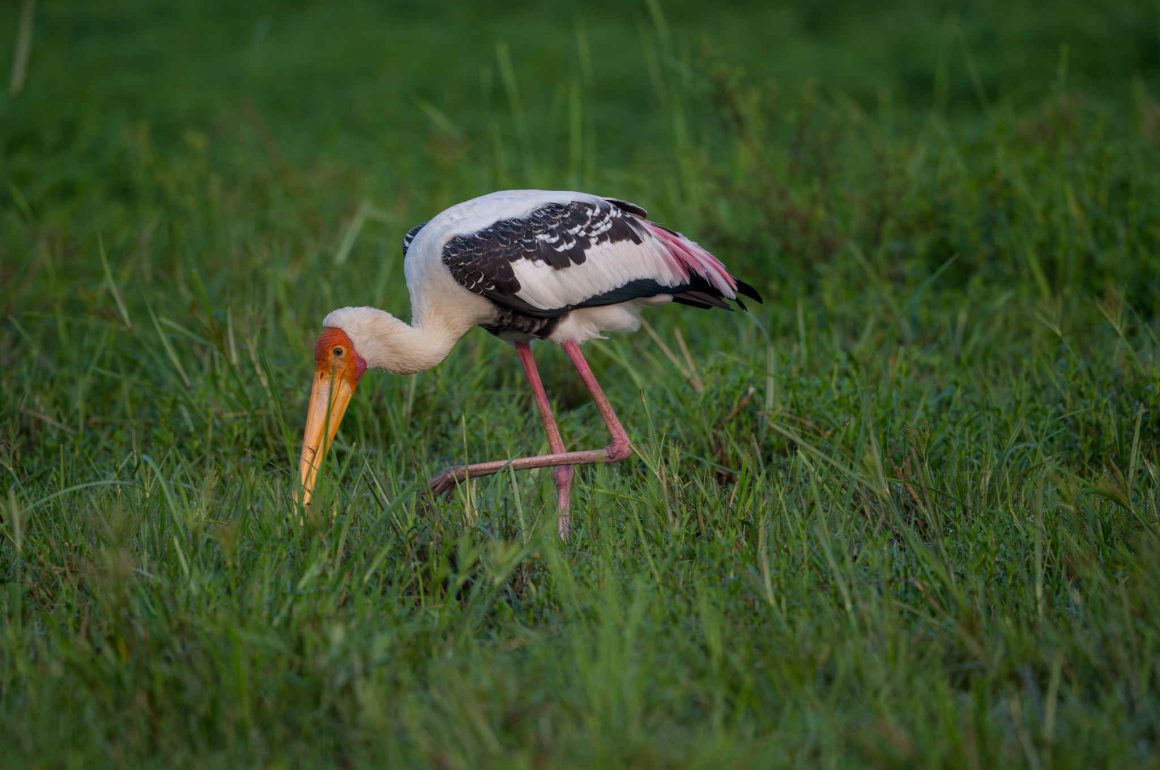
While my natural grumpiness typically leads me to make fun of even halfway sensible bird names, I am perfectly fine with the common name of the Painted Stork. Not so much with the scientific name Mycteria leucocephala though – how anyone can call this bird white-headed is a mystery to me.
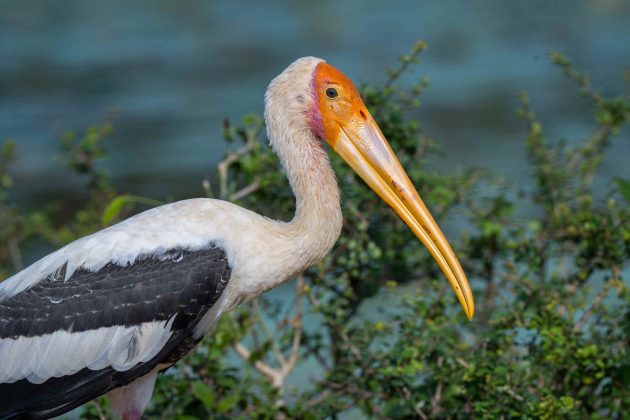
Generally, the common names of this species in a number of different languages indicate greater common sense than the scientific name – the German “Buntstorch” and the Chinese “Caiguan” both emphasize the color of the bird.
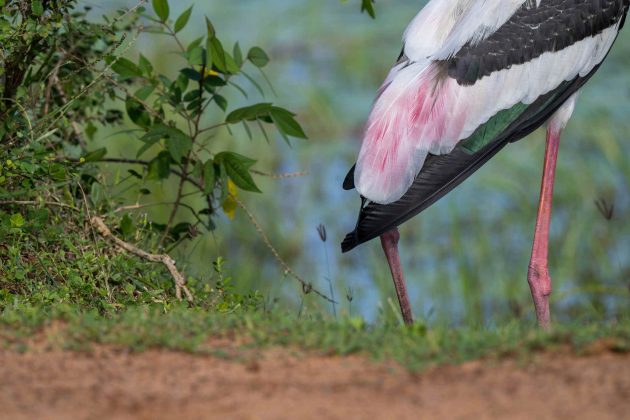
While the photos in this post were taken in Sri Lanka (in March 2025), the species is also present in India and, to a lesser extent, Pakistan and Indochina, though probably no longer in China. Some birds of the species even seem to think their appearance gives them special rights – apparently, several hundred wild birds nest in the Delhi Zoo (source).
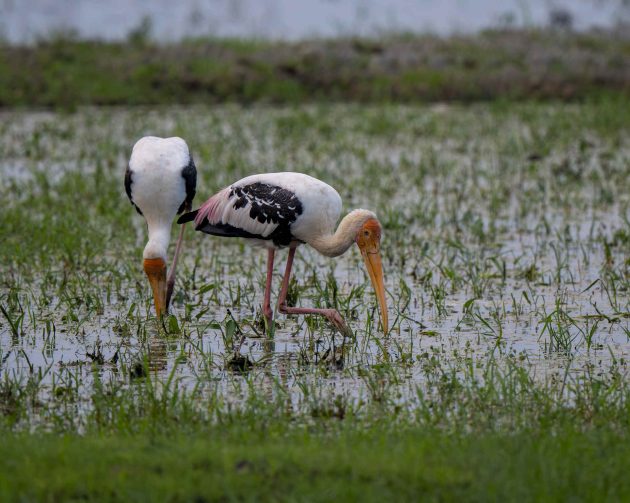
The species is listed as Near Threatened, as hunting and collection of eggs and nestlings from colonies led to a decline in numbers. However, there are locations in which the species is held in high esteem – in the Indian village of Kokkre Bellur, the villagers protect them. In this village, the species even nests on comparatively low trees, on which the nests would be too vulnerable in a less friendly environment (source).
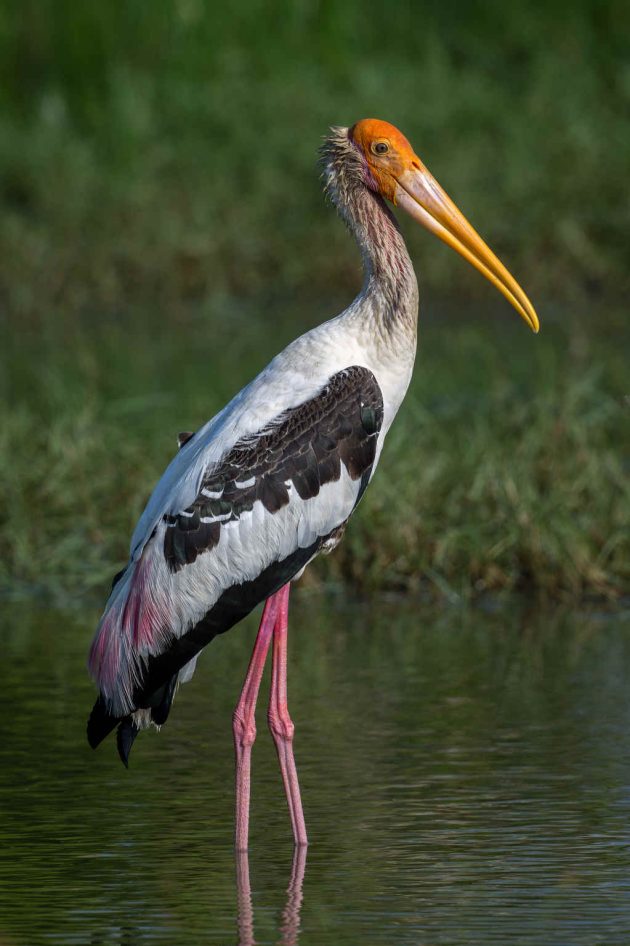
In other locations, the storks need to be a lot more vigilant to survive. One study found that generally, the male storks are more vigilant than the females. The same study recommends keeping a distance of at least 35 meters from nesting colonies to minimize disturbance to the birds.
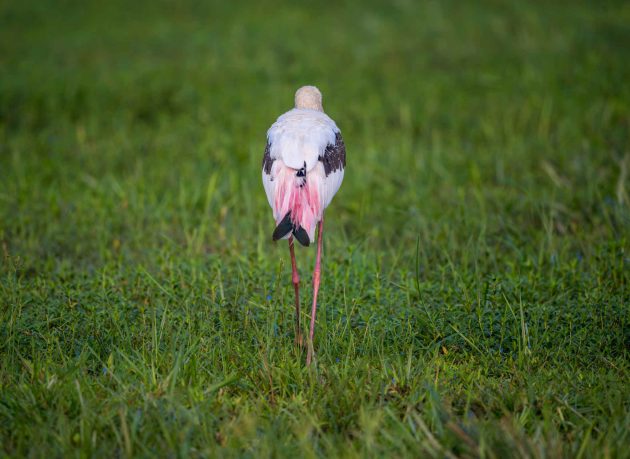
Building nests is no fun for the birds, sympathizes the author of one paper: “Nest construction is a tedious work in Painted stork and bird spent ample of time to pick, pluck and carry the nesting material for nest construction”. Choosing a leafy stick and carrying it to the nest apparently takes between a bit more than one minute to up to 8 minutes. The paper also lists how often the stick fell down during the attempt – this figure ranges from zero to 11 (!) times, with an average of about 3 times and thus makes for rather embarrassing reading for the Painted Stork.
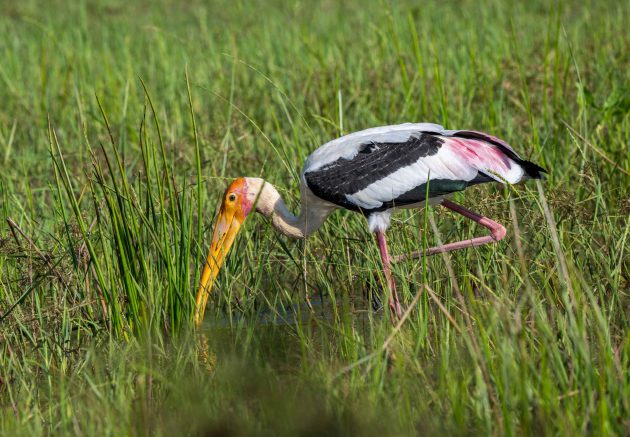
There is even a book entirely on the species, written by a Delhi University professor, specifically focusing on the birds at the Delhi Zoo. My advice to bird species wanting to be researched: Nest in places that are well-accessible to humans – zoos are fine, university campuses also work well.
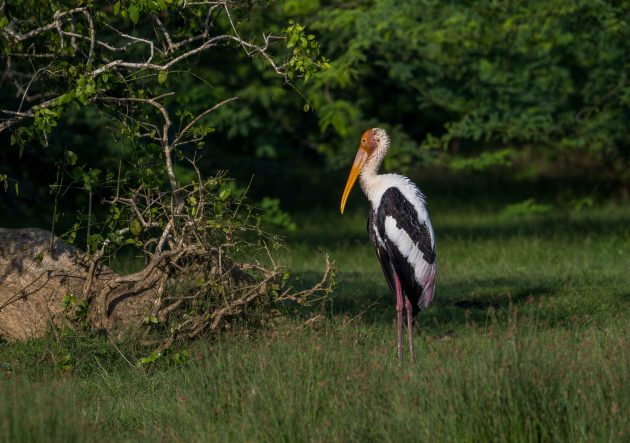


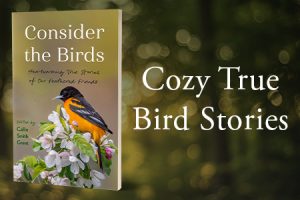

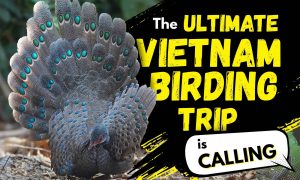
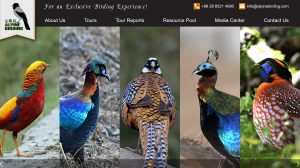

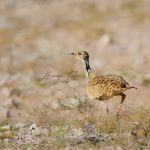

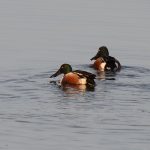

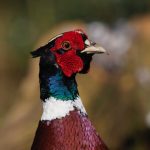
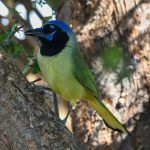
Leave a Comment